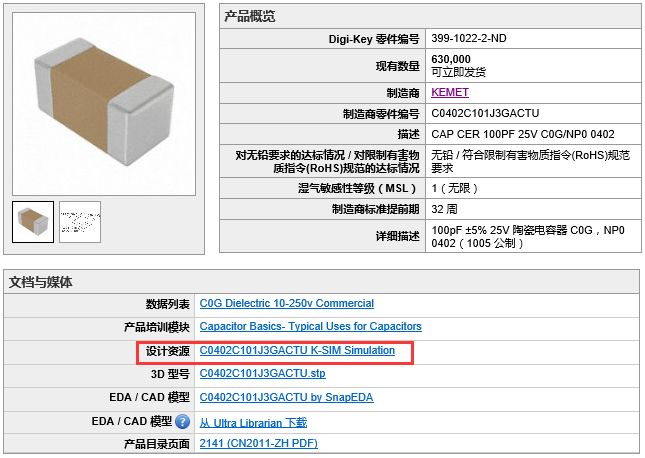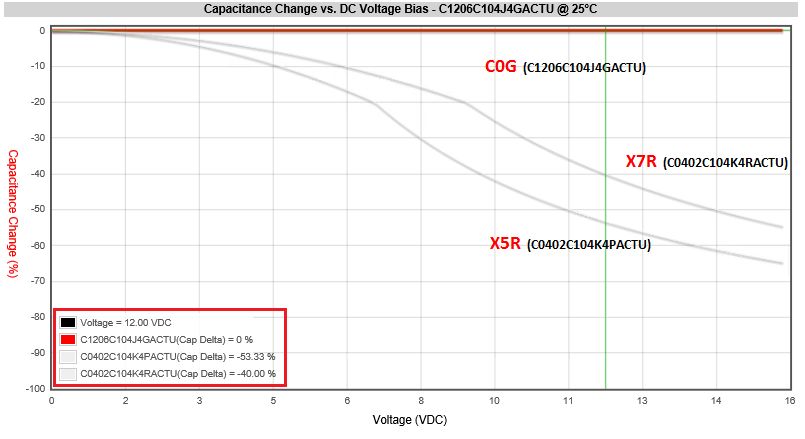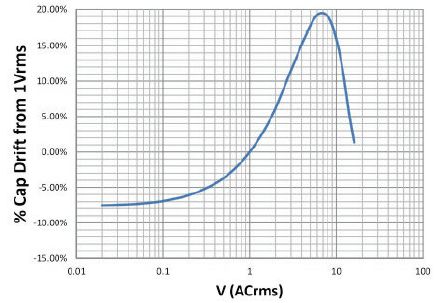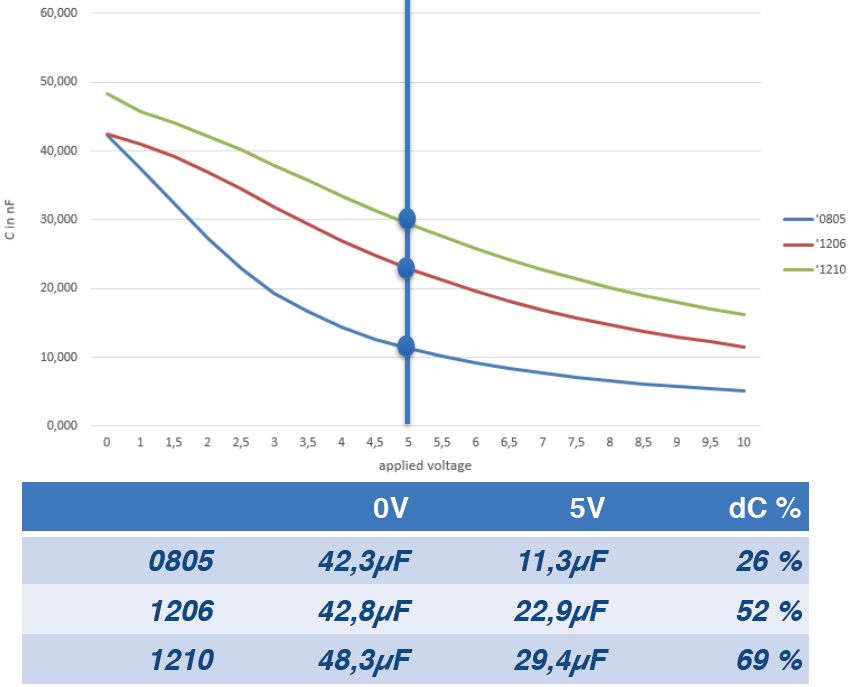In practical applications, these "hidden" factors such as temperature, voltage, and aging (placement time) will affect the actual capacitance value of ceramic capacitors. We will use a series of articles to analyze the relationship between these factors and the capacitance value in detail from the three aspects of temperature, voltage, and aging. For ceramic capacitors that use ferroelectric materials (such as barium titanate) as the dielectric material, the applied voltage often has an obvious effect on the actual capacitance value. Barium titanate is often used in X5R and X7R ceramic capacitors. Due to the influence of applied voltage, some capacitors even lose 70% of their nominal capacitance value. Therefore, for Class-II/III capacitors, if they are randomly replaced in circuits with higher stability requirements, they may face risks. The influence of DC voltage on capacitance If you want to grasp the effect of voltage on the capacitance of ceramic capacitors. In addition to actual testing and viewing data sheets, the online free tool KEMET K-SIM can directly query various parameters and curves based on KEMET models, including the relationship curve between DC voltage and nominal capacitance changes. Example: Compare the influence of the DC voltage of the following three capacitors (C0G/X5R/X7R) on the change of the nominal capacitance C0G (KEMET C1206C104J4GACTU, 0.1UF 16V C0G 1206 ±5%) X5R (KEMET C0402C104K4PACTU, 0.1UF 16V X5R 0402 ±10%) X7R (KEMET C0402C104K4RACTU, 0.1UF 16V X7R 0402 ±10%) In the design resource column on the product page of Digi-Key website, you can directly link to the KEMET K-SIM online tool. There is no need to enter the model again, just open KEMET K-SIM with one key. The KEMET ceramic capacitors on the Digi-Key website can basically be linked to K-SIM through this method. Figure 1. Link to the online free tool KEMET K-SIM through the KEMET product page of Digi-Key website As shown in the figure below, when the voltage rises from 0 to 12VDC: C0G (C1206C104J4GACTU) capacitance value decreased by 0% X7R (C0402C104K4RACTU) capacitance value decreased by 40% X5R (C0402C104K4PACTU) capacitance value decreased by 53.33% We can see that for Class I C0G, the voltage has little effect on the capacitance value. For Class II X5R/ X7R, the voltage has a greater influence on the capacitance value. Figure 2. The relationship between the DC voltage and the change of the nominal capacitance value (picture source: KEMET K-SIM) The influence of AC voltage on capacitance The figure below is a graph showing the influence of a typical AC voltage on a Class-II capacitor. Different AC voltages have different capacitance values, and may even be higher than the nominal capacitance value. Figure 3, the influence of typical AC voltage on Class-II capacitors (picture source: KEMET) The impact of packaging on capacitance Sometimes ceramic capacitor manufacturers selectively reduce the thickness of the dielectric or adjust the dielectric formula in order to maintain the same level of capacitance in a smaller package. This design change may result in higher voltage stress and greater loss of capacitance. The following figure compares the 47uF/6.3V ceramic capacitors in the 0805/1206/1210 package. The applied voltage affects the actual capacitance value: the smaller the package under 5V voltage, the faster the actual capacitance value drops. Figure 4, the influence of the voltage of 47uF/6.3V ceramic capacitors in different packages on the actual capacitance value (picture source: KEMET) The size of the package affects the thickness of the dielectric. When the same voltage is applied, especially for ceramic capacitors using ferroelectric materials as the dielectric material, the smaller the dielectric thickness, the greater the internal electric field stress. to sum up In practical applications, the size of the voltage, the type of dielectric material, and the thickness of the dielectric will all have an impact on the actual capacitance value of the ceramic capacitor. Among them, ferroelectric materials are often the culprit as dielectric materials. With the help of the online tools on the Digi-Key website and KEMET K-SIM to assist in the selection and design of ceramic capacitors, you can understand the relationship between voltage and capacitance, and do more with less. Fiber Optic Equipment,Fiber Optic Cable Drum,Fiber Optic Cable Reels,Fiber Optic Retractable Cable Reel ShenZhen JunJin Technology Co.,Ltd , https://www.jjtcl.com


